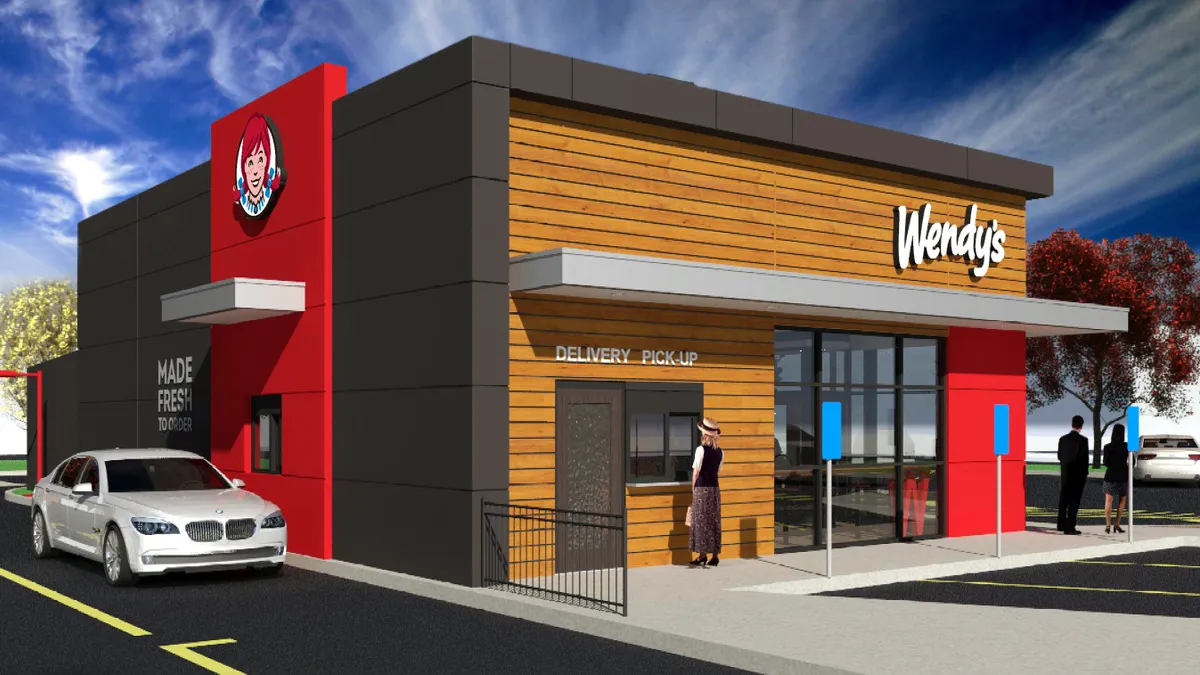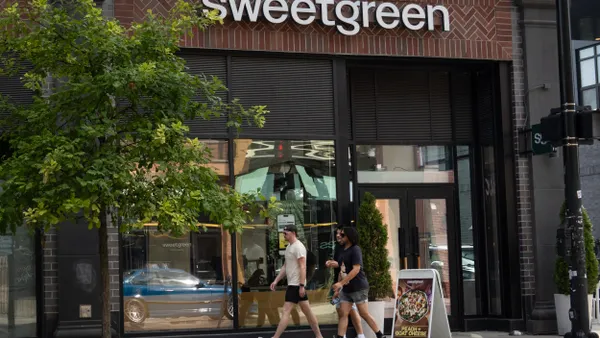Dive Brief:
- Wendy’s has committed to reducing greenhouse gas emissions by 47%, or the equivalent of 7.2 million metric tons of carbon dioxide emissions, by 2030 compared to the base year of 2019, according to a press release issued Thursday.
- The burger chain plans to reduce emissions at company-owned stores and from corporate operations, while working to reduce the intensity of greenhouse gas emissions by franchisees and supply chain partners.
- Possible changes include a renewable energy purchasing agreement, new refrigerant chemicals and more energy-efficient store designs.
Dive Insight:
Wendy’s planned reductions are consistent with cuts needed to keep global temperatures from rising more than 1.5 degrees centigrade above pre-industrial averages, the company said. Its target goals were approved by the Science Based Targets Initiative (SBTi), a private sector advisory group funded primarily by the Bezos Earth Fund and the Ikea Foundation, that specializes in helping companies set sustainability targets, the company said.
Wendy’s aims to reduce its Scope 1 and 2 emissions by 47%. Scope 1 emissions are generated directly by company operations, and Scope 2 emissions result from the generation of power purchased by the company, according to the Environmental Protection Agency. Wendy’s intends to reduce the intensity of its Scope 3 emissions, generated by entities like franchisees or food supply companies, by 47% per metric ton of purchased goods and 47% per franchised restaurants. The bulk of the company’s Scope 3 emissions are generated by the production processes for purchased goods, requiring the company to work diligently with partner firms.
“Purchased goods, such as food and packaging, represent nearly 85% of the System’s Scope 3 emissions while Wendy’s more than 6,500 franchised restaurants contribute approximately 10% of Scope 3 emissions,” Wendy’s said in the press release.
Wendy’s will work with supply companies to identify ways to reduce emissions or sequester carbon. The company did not immediately clarify how much of its estimated 7.2 million tons of emissions reductions would be accounted for by carbon capture and utilization projects, a still developing technology. The current capacity of carbon capture schemes is about 10 million tons of CO2 a year and may rise to 110 million tons by 2030, according to the International Energy Agency, well shy of an estimated 1.2 billion tons in capacity the IEA estimates would be needed to bolster net-zero emissions plans. Currently, the National Oceanic and Atmospheric Administration estimated global emissions at roughly 40.6 billion tons of CO2 per year.
Aside from carbon capture and sequestration, Wendy’s reductions will be based on efforts to develop a renewable electricity procurement plan. The company already has a renewable energy plan to power seven restaurants with solar energy. Wendy’s has also developed a store design it says is 10% more energy efficient than its most common store builds, according to the press release.
With both franchisees and consumers worried about climate change, many restaurant companies have announced ambitious emissions reductions plans. In 2021, McDonald’s declared its desire to achieve net-zero emissions by 2050. That same month, Panera said it wanted to remove more carbon from the atmosphere than it emitted by 2050, a plan that relied on carbon capture technology that has yet to be deployed at scale. In December, McDonald’s announced a plan to power its supply chain warehouses and distribution centers with 470,000 megawatt hours of solar energy. Such sustainability plans may be at odds with continued expansion of drive-thru concepts.










